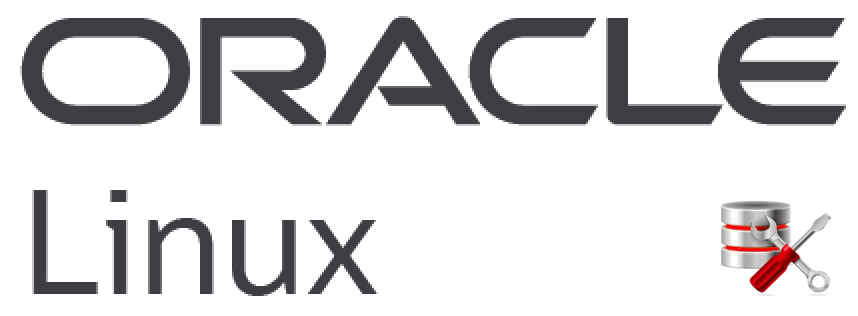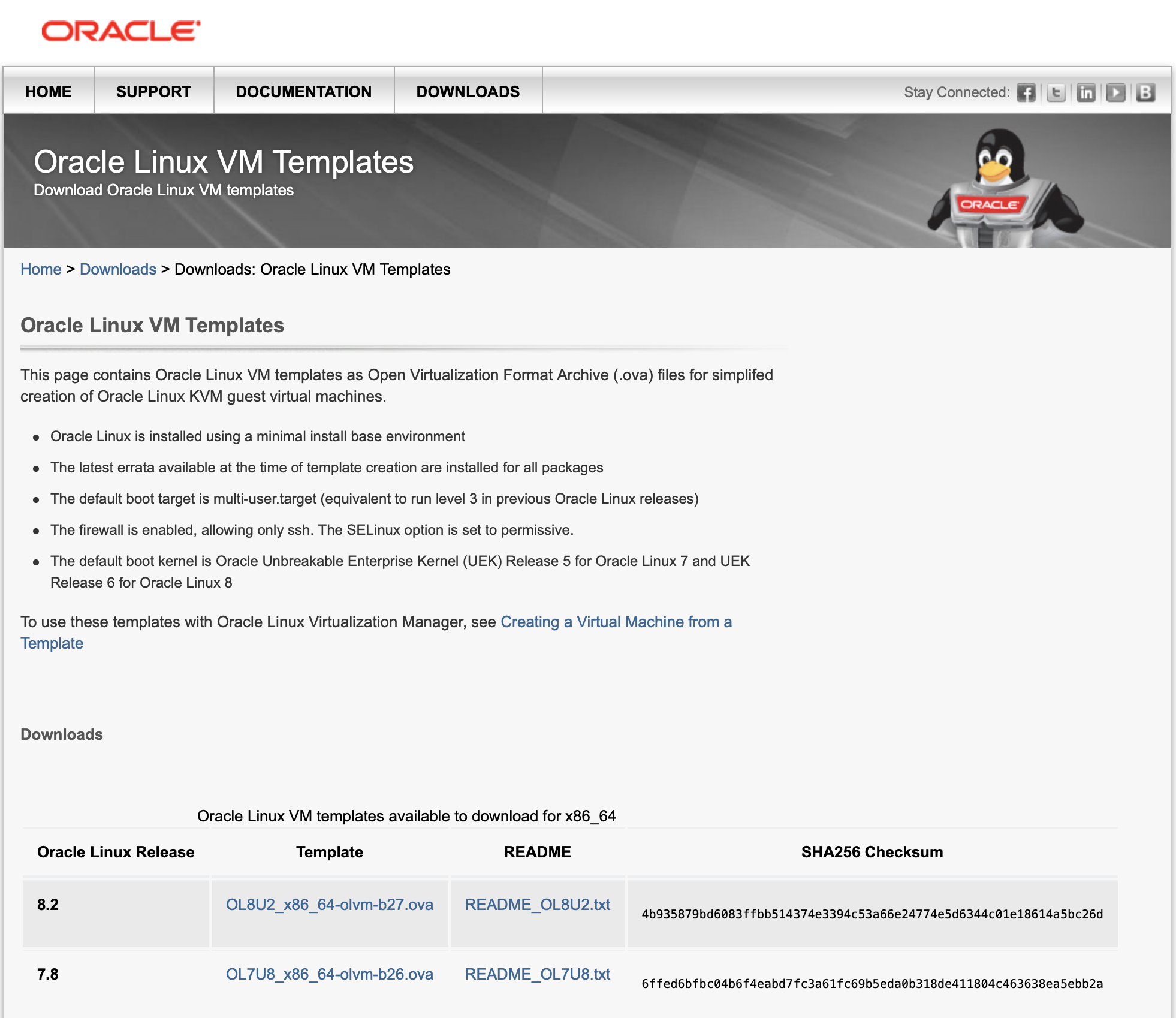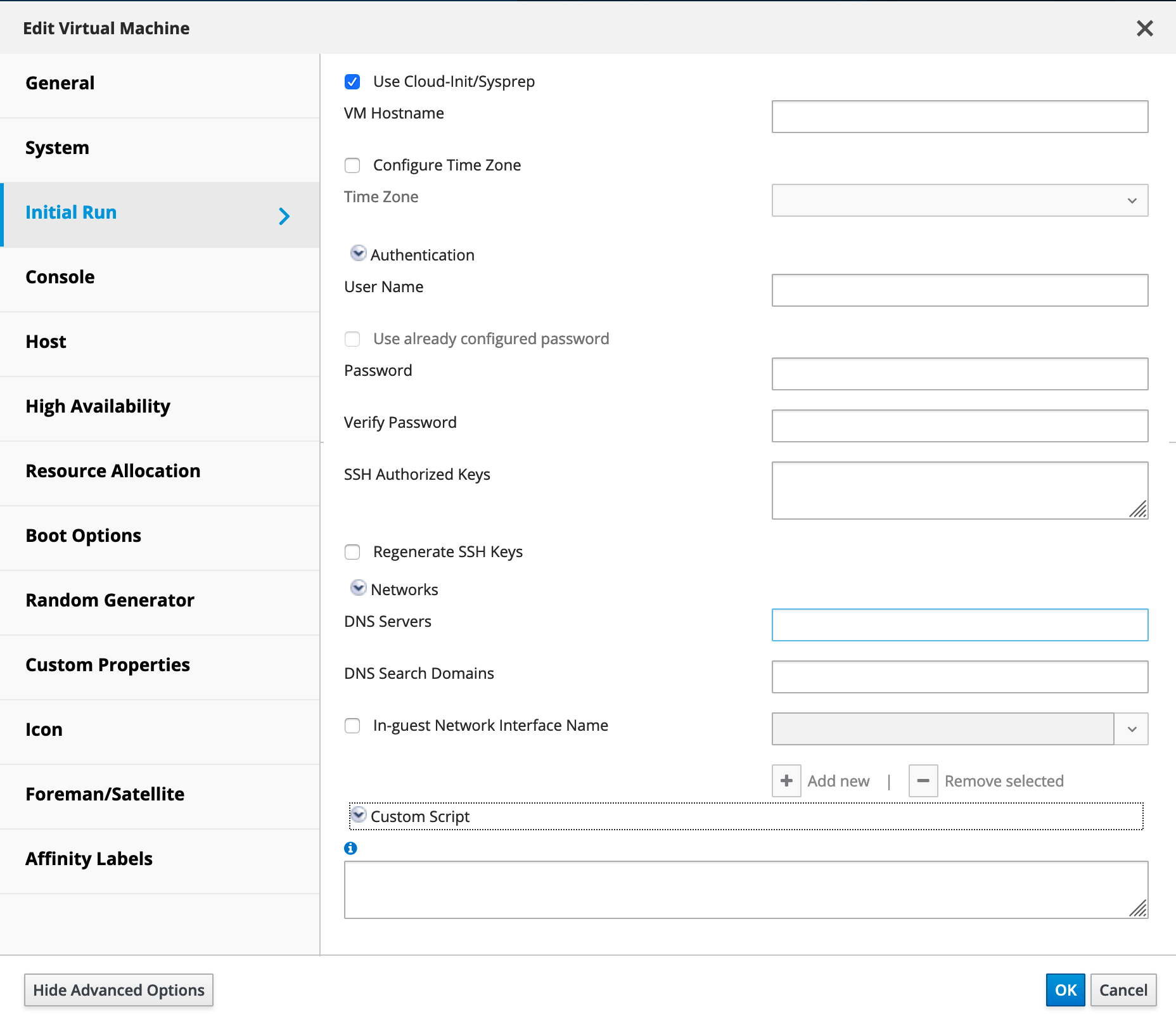
Oracle is pleased to announce updated Oracle Linux Templates for Oracle Linux KVM and Oracle Linux Virtualization Manager.
Oracle Linux Templates for Oracle Linux KVM provide an innovative approach to deploying a fully configured software stack by offering pre-installed and pre-configured software images. Use of Oracle Linux Templates eliminates the installation and configuration costs, and reduces the ongoing maintenance costs helping organizations achieve faster time to market and lower cost of operations.
New templates include:
- Oracle Linux 7 Update 8 Template
- Unbreakable Enterprise Kernel 5 Update 4 – kernel-uek-4.14.35-2025.400.8
- 8GB of RAM
- 37GB of OS Virtual-Disk
- Oracle Linux 8 Update 2 Template
- Unbreakable Enterprise Kernel 6 – kernel-uek-5.4.17-2011.4.4
- 8GB of RAM
- 37GB of OS Virtual-Disk
New Oracle Linux Templates for Oracle Linux KVM and Oracle Linux Virtualization Manager supply powerful automation. These templates are built on cloud-init, the same technology used today on Oracle Cloud Infrastructure and includes improvements and regression fixes.
Downloading Oracle Linux Templates for Oracle Linux KVM
Oracle Linux Templates for Oracle Linux KVM are available on yum.oracle.com website on “Oracle Linux Virtual Machine” Download section.

Further information
The Oracle Linux 7 Template for Oracle Linux KVM allows you to configure different options on the first boot for your Virtual Machine; cloud-init options configured on the Oracle Linux 7 Template are:
- VM Hostname
- define the Virtual Machine hostname
- Configure Timezone
- define the Virtual Machine timezone (within an existing available list)
- Authentication
- Username
- define a custom Linux user on the Virtual Machine
- Password
- Verify Password
- define the password for the custom Linux user on the Virtual Machine
- SSH Authorized Keys
- SSH authorized keys to get password-less access to the Virtual Machine
- Regenerate SSH Keys
- Option to regenerate the Virtual Machine Host SSH Keys
- Username
- Networks
- DNS Servers
- define the Domain Name Servers for the Virtual Machine
- DNS Search Domains
- define the Domain Name Servers Search Domain for the Virtual Machine
- In-guest Network Interface Name
- define the virtual-NIC device name for the Virtual Machine (ex. eth0)
- DNS Servers
- Custom script
- Execute a custom-script at the end of the cloud-init configuration process
These options can be easily managed by the “Oracle Linux Virtualization Manager” web interface by editing the Virtual Machine and enabling the “Cloud-Init/Sysprep” option:

Further details on how to import and use the Oracle Linux 7 Template for Oracle Linux KVM are available in this technical article on Simon Coter’s Oracle Blog.
Oracle Linux KVM & Virtualization Manager Support
Support for Oracle Linux Virtualization Manager is available to customers with an Oracle Linux Premier Support subscription. Refer to the Oracle Unbreakable Linux Network for additional resources on Oracle Linux support.
